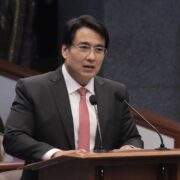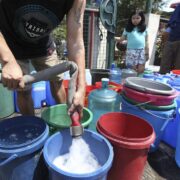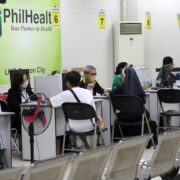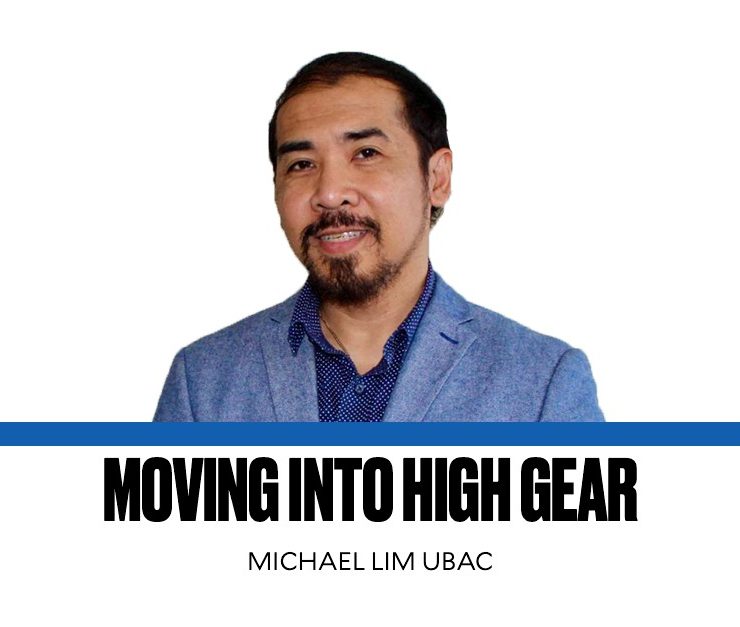A million new cars on the road? No, thanks
How often do we pursue things without carefully considering their long-term implications? Take a look at the booming car industry, which is seen as a gauge of the economy’s health, but it may also reveal the dysfunctions of our policies in the transport sector.
Last year saw a new record high in vehicle sales, with manufacturers selling 467,252 car units, up by 8.7 percent, according to industry data. (see “PH vehicle sales hit a fresh record high in 2024,” News, 1/15/25)
This figure is the highest volume of vehicles sold on record. However, this new record in car sales is actually below target. By the end of 2024, car manufacturers had set a goal of selling 500,000 new units (or a 10- to 15-percent increase in sales).
Encouraging prospects
Thus, expectations for better industry performance have been carried forward to 2025.
Toyota Motor Philippines, which has a 47-percent market share in the local market, saw encouraging prospects for the industry this year, as it expects to achieve the 500,000-unit goal, “with favorable economic conditions expected to boost the spending power of Filipinos.” (see “New high: PH vehicle sales seen to top 500,000 this year,” News, 2/3/25)
Despite this optimistic view of the Philippine economy during an election year, the question remains: Where will these cars go? Having sold almost half a million new cars locally last year, and if we reach the target of buying another half a million cars this year, imagine a million new cars jostling against each other on the severely congested roads of Metro Manila, Cebu City, Baguio, and Davao by December 2025.
Having new cars plying our existing roads is perfectly acceptable if we continue to build new roads or widen existing ones at the same brisk rate as vehicles leave car showrooms. Have there been any notable road widening projects on Edsa, C-5, Taft Avenue, Roxas and Aurora Boulevards? The large potholes on these roadways and the constant presence of traffic officers in balaclavas are what stand out. Especially in Manila and Pasay, these officers congregate in busy intersections ready to pounce on traffic violators instead of actively directing traffic flow.
And we’re not just talking about half a million new cars bought in the country since 2024. There were 429,807 units sold in 2023, 352,596 in 2022, 268,488 in 2021, 223,793 in 2020, and 369,941 in 2019.
If we enlarge our vista further, we will discover that in 2023, the Philippines had over 14.3 million registered motor vehicles, as reported by the US International Trade Administration. But the Land Transportation Office has estimated that there are around 38 million vehicles in the Philippines, including buses, trucks, vans, motorcycles, and tricycles.
Worst traffic in the world
With so many vehicles, particularly concentrated in urban areas, it’s no small wonder that Metro Manila had the ignominious title of having the worst traffic congestion among metro areas in the world in 2023.
The House of Representatives Congressional Policy and Budget Office Research Department, citing the 2023 TomTom Traffic Index, stated that out of 387 cities across 55 countries, Metro Manila “registered the longest average travel time to traverse a 10-kilometer route (e.g., Cubao to Makati) at 25 minutes and 30 seconds.” Metro Manila’s ranking slightly improved in 2024 to 15th place only because TomTom added 137 new cities to its list, or from 387 in 2023 to 500 cities in 2024.
The buildup of vehicular traffic leads to lost time and opportunities and unproductive use of fuel. As combustion engines use fossil fuels such as gasoline and diesel, there’s a higher incidence of air pollution (carbon monoxide, particulate matter) with more cars on the road.
If projections by the motoring sector hold, we will have one million new cars by the end of the year, including almost half a million cars bought last year. This is a recipe for chaos on the streets, and we had a taste of this severe road congestion last December.
Policy recommendations
Although traffic congestion is caused by multiple factors, the unmitigated sale of cars is the biggest factor responsible for it. Shouldn’t this traffic crisis force us—policymakers, auto manufacturers, and car owners—to start bringing order and sanity to our streets?
We must come up with a policy that effectively restricts how many cars residents of congested cities can possess by, for instance, imposing higher auto excise tax rates on their third car, and so on. It’s also worth penalizing owners of crumbling cars that are perpetually parked on the streets, and disposing of 30-plus-year dilapidated cars that are prone to breakdowns and are already road safety hazards is a wise policy.
The most effective approach is to enhance urban connectivity by creating a reliable, safe, and accessible mass transit system that connects major routes from the airport to seaports to city centers and residential neighborhoods.
—————-
For comments: mubac@inquirer.com.ph


















